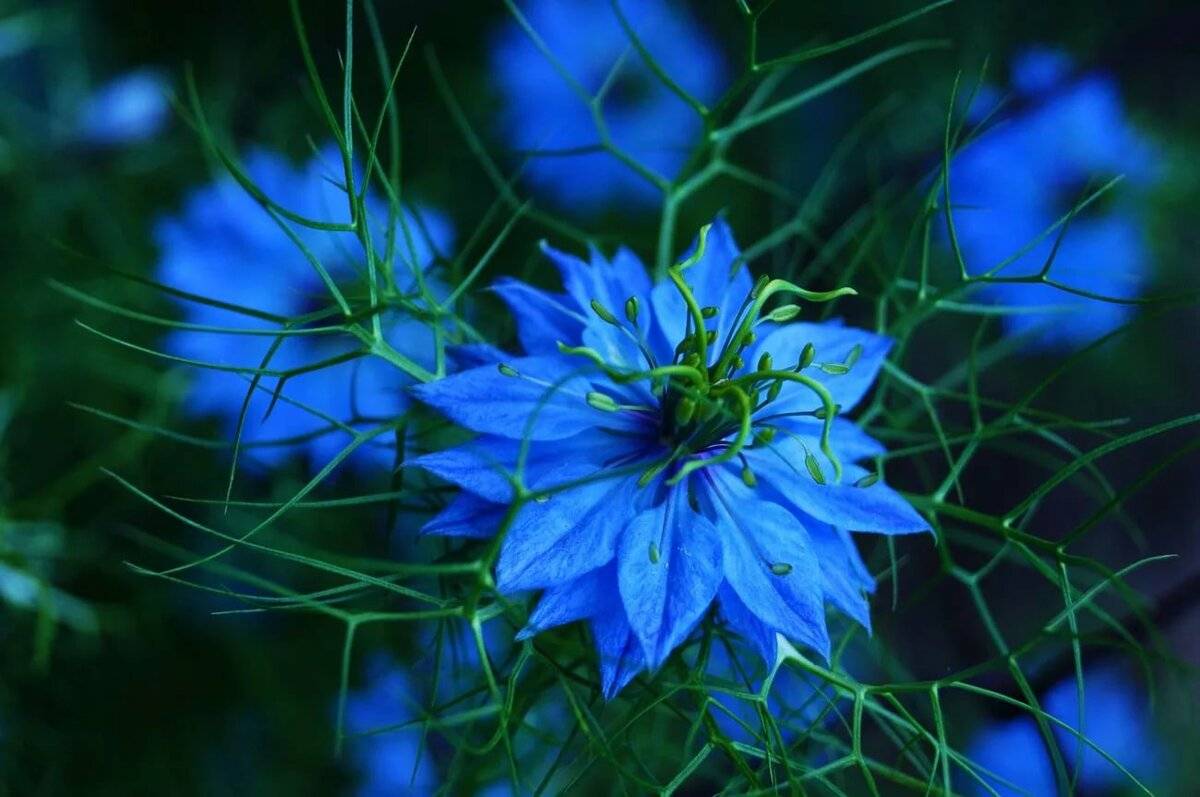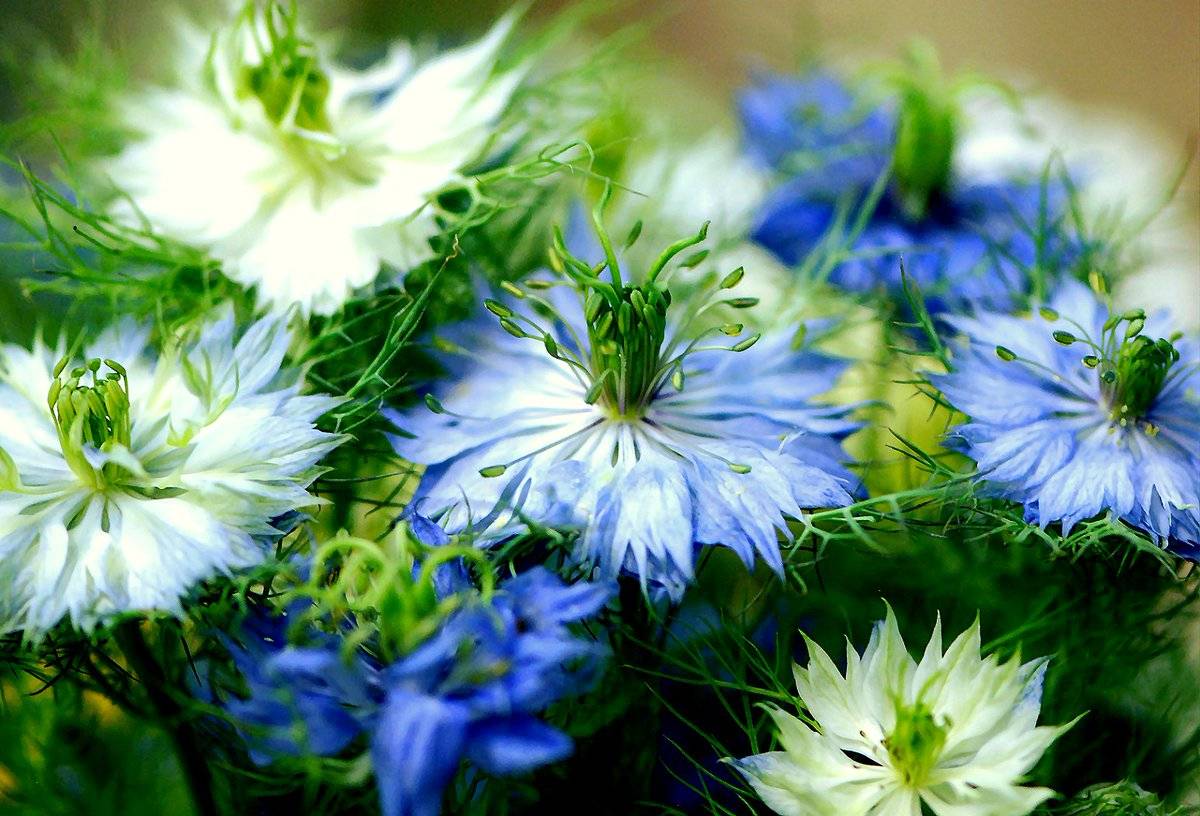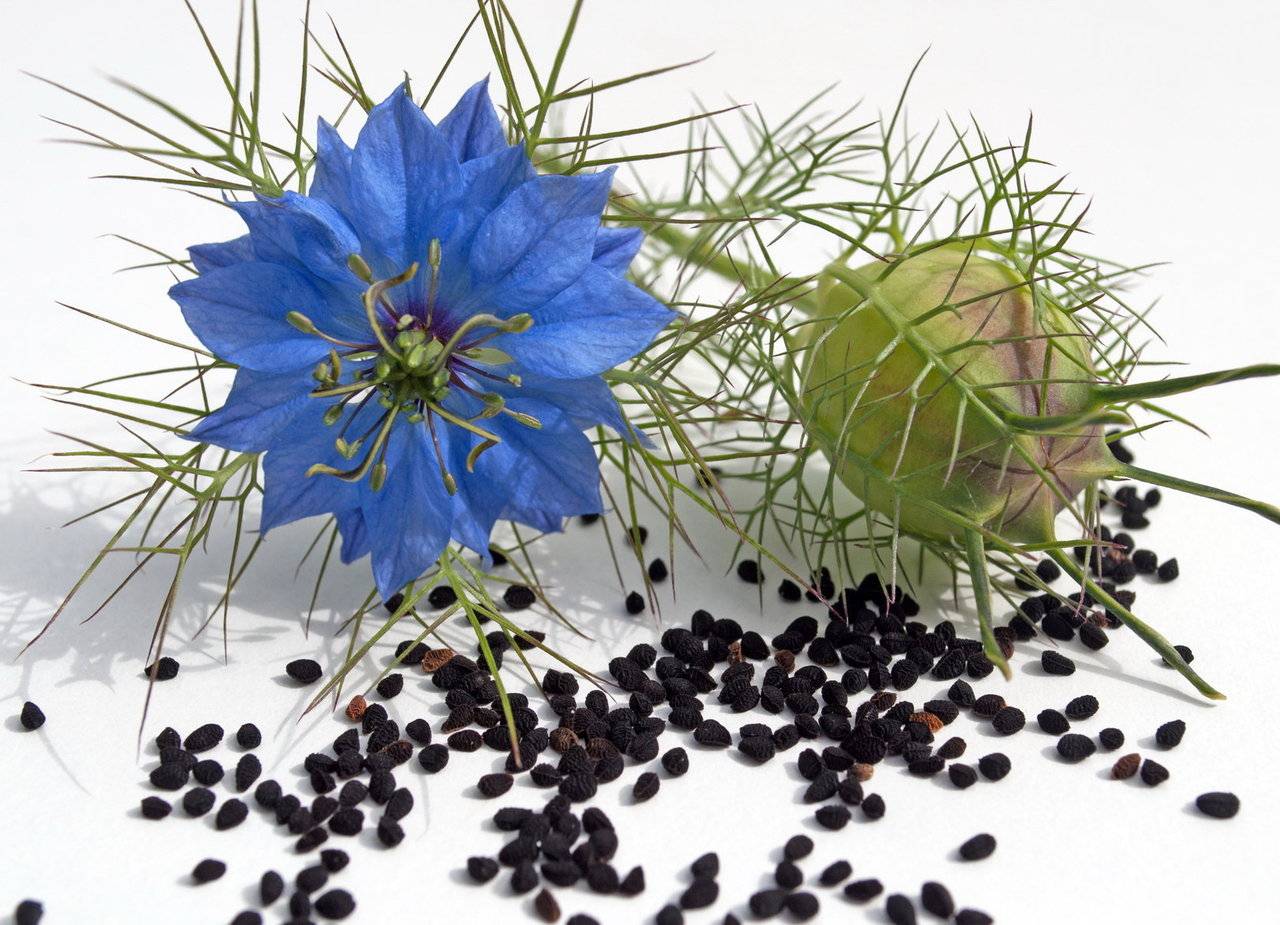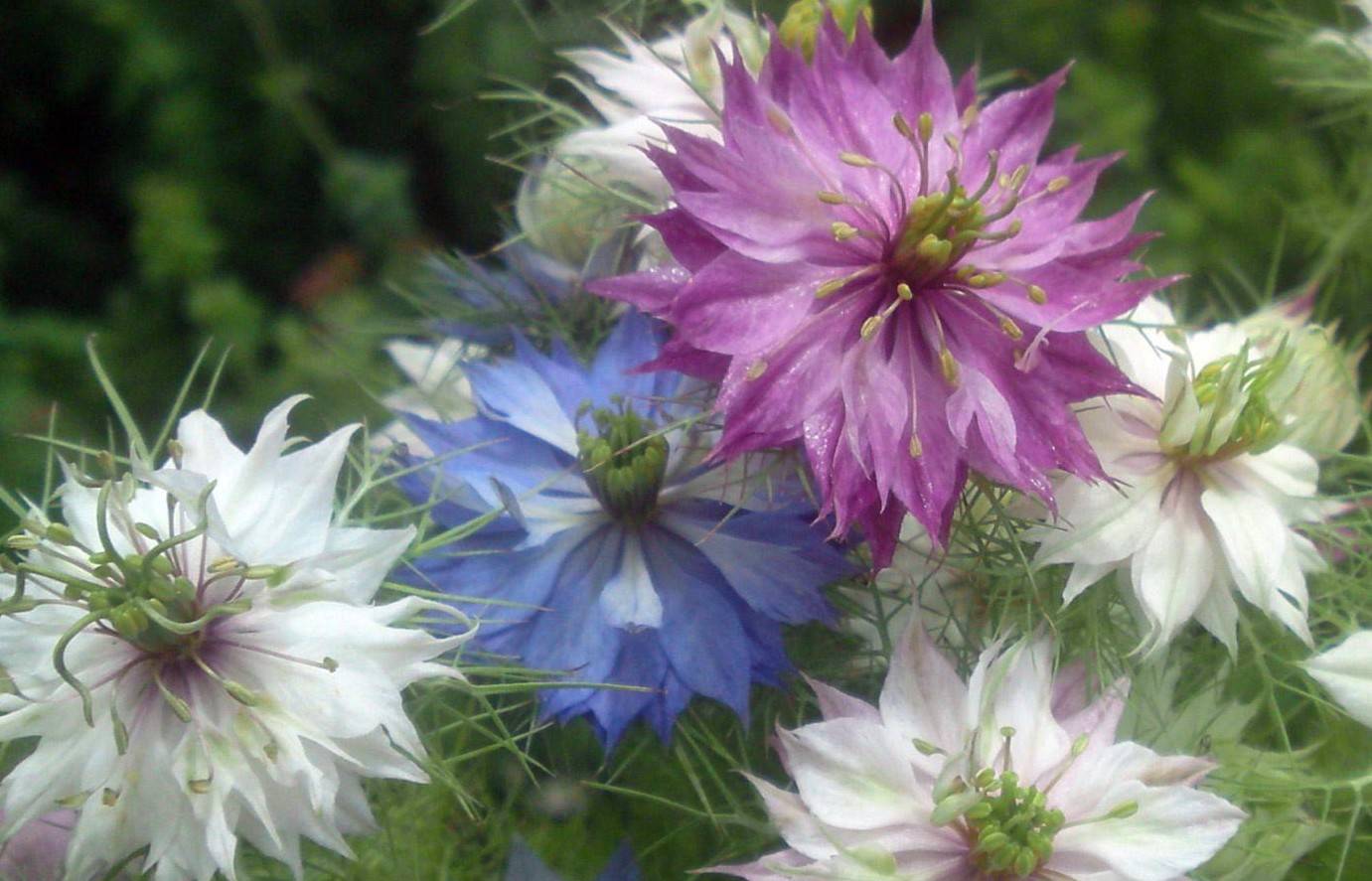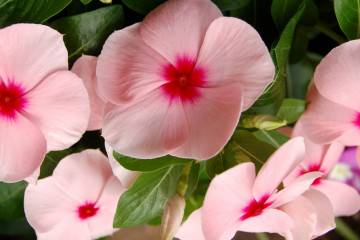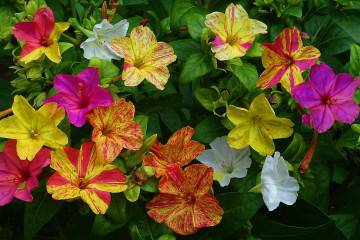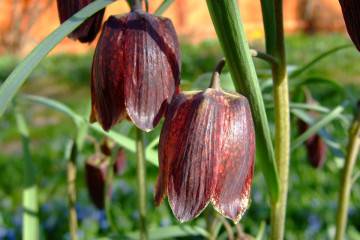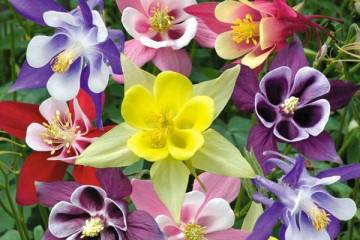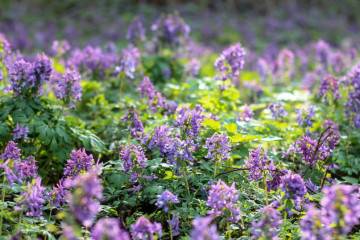Damascus nigella (Albina) - a flower of white, blue and blue
Content:
Among annual plants, the Damascus Nigella attracts special attention of florists. This flower has a unique beauty, one of a kind. Usually, it is an integral part of the decor in the development of landscape designers. The plant is often used in the creation of cosmetics, added to dishes and used for medicinal purposes.
What does Damascus nigella look like
Nigella, or damask nigella, as it is also called, is used as a decoration in rose gardens and other elements of landscape design. Her flowers are usually light, bluish and yellow.
History of appearance
Nigella belongs to the buttercup family. The name of the flower comes from niger - a Latin word that means "black". In the description of Nigella, it is indicated that her seeds are colored dark, so this word is better than others for her name. At first, they were engaged in flower cultivation in Turkey and the North Caucasus. From there it was brought to India and only then to European countries.
Characteristics
The nigella plant, which can be yellow, blue or white, has the following characteristics:
- height - 0.3-0.6 m;
- branchy shoots;
- lacy leaf plates, alternately arranged, finger-pinnate or pinnately dissected;
- the diameter of the flowers is 4 cm, they have 5 sepals;
- the petal part is represented by nectaries;
- fruits - boxes, consisting of 5 leaflets;
- the seed is ovoid, matte black.
Popular varieties of nigella
Nigella is distinguished by high decorativeness and unpretentiousness, therefore it is often used in landscape design. The following varieties have gained the greatest popularity:
- Persian Jewels. The variety combines flowers of bluish, lilac-pink, light and pinkish colors.
- Cambridge Blue. This is the name of the blue nigella, reaching a height of 0.9 m. It usually has double flowers.
- Miss Jekyll Rose. The variety was bred for the planters of bouquets. The plant is relatively short - 0.5 m in height. The flowers have a dark pink-red hue.
- Dwarf Moody Blue. Another variety with bluish flowers. The plant is called a dwarf because it reaches a height of only 15-20 cm.
- Purple Splendour. The plant is of medium height. This variety is distinguished by pink, pink-purple, lilac flowers. Their color is more variegated than that of other plants of this species.
How nigella breed
Growing Nigella Albin and all other varieties does not require effort and time. The plant can reproduce in several ways.
Planting seeds for seedlings
The seedling method of growing nigella is longer than the non-seedling method. However, it is he who is most often used by gardeners. Seeds should be sown in a greenhouse at the end of winter, a month and a half before the end of frost. For sowing, choose wide wooden or plastic boxes, which are filled with a universal substrate or a mixture of turf and sand.
Seeds planted in the ground are sprinkled with sand, then sprayed with a small amount of water. From above, the boxes are covered with glass or polyethylene. The shelter must be removed daily to provide airflow to the seed. In the room where the box with future seedlings will be located, the temperature should be from 22 to 25 ° C, diffused lighting. The soil is sprayed as it dries.
Seedling care
The first seedlings appear two to three weeks after sowing the seeds. Then the shelter is removed for good, the temperature drops by a couple of degrees, that is, to 21-23 ° C. This measure prevents the seedlings from "pulling out". Its watering is carried out further by spraying until it is ready for transplanting into individual peat-humus pots.
Dive
Seedlings are dived after the appearance of real leaves. Seedlings are transplanted very carefully, it is important not to damage the root system. If there are no peat-humus pots at hand, ordinary plastic cups are suitable, from which plants are then planted in open ground.
Seedless way
Nigella, planting and caring for which in the open field is not particularly difficult, can be grown in a seedless way. In this case, the seeds are sown in the garden in April-early May, but this can be done for the winter as well.
In one place, the seeds are sown from 3 to 4 times with an interval of 3-4 weeks. This ensures continuous flowering of the nigella throughout the summer. The soil is prepared in advance. It shouldn't be sour.
Is it possible to plant a plant in a pot
If Nigella was a perennial plant, it could be planted in a pot. However, in this case it is not recommended to do this. The best place for a plant is a garden bed.
Features of care in the garden
Nigella is an unpretentious plant, so it's easy to care for it. The flower will feel best in areas flooded with sunlight. In the shade, it will simply stop growing and certainly will not bloom. The plant is afraid of shade and high humidity, since its homeland is North Africa. Watering Nigella white or any other is necessary only when necessary.
It is important to remove weeds on time and not to plant a flower near ground covers. The soil must be loosened only before planting seeds or seedlings. It should be borne in mind that Nigella does not like mulching. It grows well and blooms without feeding, but during the flowering period it is still better to apply potassium-phosphorus fertilizers.
Nigella blooms from June to late August or early September. This is an annual plant that sometimes propagates by self-seeding, which means that next summer you can contemplate beautiful flowers on the site.
Transfer
Only seedlings are transplanted. Adult plants are not recommended to be moved from place to place, as they are likely to wither away.
Pruning
Gardeners recommend pruning only seed pods. They appear after flowering. The boxes are cut along with the shoots, after which they are tied into bundles and placed in a dry, well-ventilated room. This is best done in late August or early September.
Preparing for winter
Faded plants are not prepared for wintering. As for the seeds planted for the winter, they must be deepened into the soil by 2 cm. Otherwise, they will freeze and do not sprout in spring.
Possible growing problems
Most often, nigella is attacked by spider mites, which usually suck sap from the plant. The reason for their appearance on the plant is dry weather and lack of moisture. To destroy these pests, it is enough to treat the nigella with insecticidal acaricidal preparations.
Nigella may suffer from a disease such as powdery mildew. It usually appears during rainy, cool summers. To rid the plant of an ailment, it is enough to treat it several times with a fungicidal solution. The interval between treatments is seven to 10 days.
Signs of improper care
The main signs of improper care of Nigella Damascus are considered the appearance of pests and diseases on it. Do not forget that the plant does not like loosening, acidic soil, dark areas and excessive watering.
Flower properties
The flower has many useful properties.
Medical and culinary uses
Nigella seeds are added to baked goods, used for canning vegetables. The leaves can be used as an ingredient in a salad. It is believed that they have tonic and body-strengthening properties.
From a medical point of view, nigella seeds have such beneficial properties as:
- antispasmodic;
- choleretic;
- bronchodilator;
- anthelmintic;
- diuretic.
They are recommended for use in disorders of the gastrointestinal tract, hypertension, kidney disease, hormonal imbalance, cystitis. But you should consult your doctor before using the plant in the form of tea or tincture to improve your health.
Nigella, which planting and caring for which does not cause much trouble for gardeners, is very popular with florists and landscape designers for its unusual colors that look like stars.
